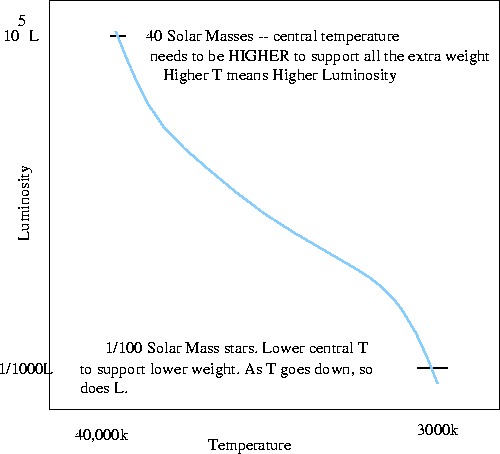We can already figure out the rough main-sequence lifetimes
of stars of different masses.
A 10 M has a central temperature of
30,000,000 K and a luminosity of 40,000
L
has a central temperature of
30,000,000 K and a luminosity of 40,000
L .
.
We know that the fuel of stars is mass and that the
rate of fuel consumption is the luminosity. So a
10 M star would be expected to live 10 times
longer based on its extra fuel, but, 1/40000 less long based on its fuel
consumption:
star would be expected to live 10 times
longer based on its extra fuel, but, 1/40000 less long based on its fuel
consumption:
Lifespan ( 10 M ) ) |
= |
10
|
x |
Lifespan ( 1 M ) ) |
= |
0.00025 x Lifespan ( 1 M ) ) |
| 40,000 |
Similarly a 0.3 M star with
0.01 L
star with
0.01 L would have a main-sequence
lifetime that was:
would have a main-sequence
lifetime that was:
Lifespan ( 0.3 M ) ) |
= |
0.3
|
x |
Lifespan ( 1 M ) ) |
= |
30 x Lifespan ( 1 M ) ) |
| 1/100 |
So even though more massive stars have more fuel (mass),
they use it up faster (higher luminosity) and so have shorter main sequence
lifetimes than the less massive stars.

 He .
He .
 has a central temperature of
30,000,000 K and a luminosity of 40,000
L
has a central temperature of
30,000,000 K and a luminosity of 40,000
L